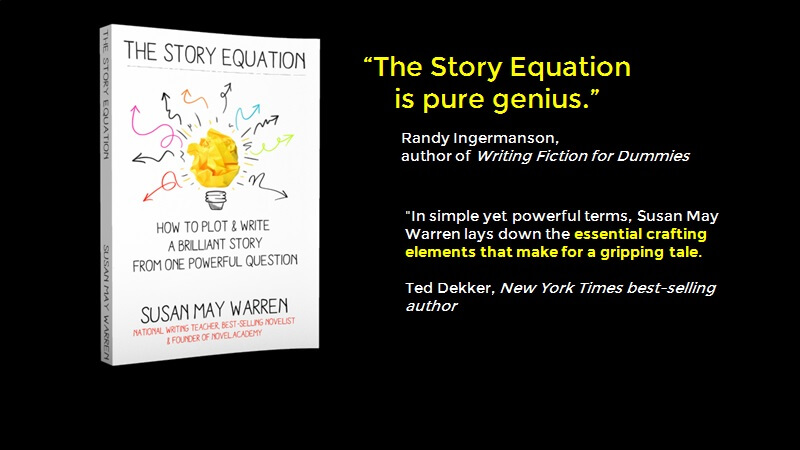
In disgust . . . with delight . . . of discouragement—useful language in our powerful prose, right? We can tack these little prepositional phrases onto our sentences and make sure our reader knows exactly what our character is feeling at any given moment. All very nice and tidy, except for one big thing—these kinds of phrases turn our writing telling and flat when we are shooting for vibrant and poignant.
If I have to tell the reader my characters’ emotion by adding these little prepositional tags, I haven’t made effective use of body language, inner monologue, or dialogue. The prepositional “tell” can be a lazy way out of mastering these vital aspects of craft. Not only do we shortchange our reader in the emotional resonance department, we cheat ourselves of valuable skills.
During the editorial process for Reluctant Burglar, my first novel in the To Catch a Thief series, my editor extraordinaire, Karen Ball, opened my eyes to this common blooper and its often ridiculously simple fix. The lesson has stood me in good stead through subsequent novels, Reluctant Runaway and Reluctant Smuggler. Let me show you what I mean. Example is an excellent teacher.
The following are “before editing” and “after editing” snippets from that initial manuscript.
BEFORE:
Desi’s skin prickled with pleasant excitement.
AFTER (in context):
Shadows loomed. The place reeked of ancient secrets. Desi’s skin prickled. She stifled a laugh. The “ancient secrets” she smelled were cleaning solutions used to preserve the priceless art the museum displayed.
The latter version lets the reader feel the amused excitement, as well as a hint of intrigue, right along with the main character. So much more potent than outright telling the reader what Desi is feeling.
BEFORE:
He took his place behind the desk, and then folded his hands across his paunch with a condescending smile.
AFTER:
He took his place behind the desk and folded his hands across his paunch. A smile widened his cheeks but stopped below his nose.
Doesn’t the after version hit you in the gut? You can feel the false welcome without being a condescending writer who must explain everything to the reader.
BEFORE:
She narrowed her eyes in comprehension.
AFTER:
“What gives, girl? You don’t often get that look on your face. Like a cross between a mule and a bronco. Last time was when that hot Italian agent came around and . . . ohhhh . . .” She narrowed cat-green eyes, then laughed. “Tall, dark, and intense musta been hangin’ around again. And he missed you? What a hoot!”
This is an example of dialogue doing all the explaining necessary. The context makes the character’s comprehension obvious in a way that’s fun and memorable for the reader.
We want our stories full of the subtle grace that lives on in readers’ hearts long after they’ve closed the book. In order to hit that high mark, we must learn to respect their intelligence and exercise our own to create characters so lifelike that their emotions drip from the page without the necessity of announcing them as if we are writing an instruction manual.
Do a search and destroy for those nasty, niggling prepositional tells. Root them out. Be ruthless! You’ll be glad you did . . . and so will your reader.
by Jill Elizabeth Nelson
Waterbrook Multnomah Publishing Group
January 2008
ISBN: 1590526880
They say keep your friends close and your enemies closer, but what if you can’t tell the difference?
How is a vicious gang of slaver traders involved with missing Mayan antiquities? Museum security expert Desiree Jacobs and FBI agent Tony Lucano must find the truth that will save their lives and liberate innocents caught in the snare of calculating evil.
"Jill Elizabeth Nelson has crafted an amazing tale of international intrigue, pulse-pounding drama, and sacrificial love, as well as an exceptional story line. Reluctant Smuggler is a great read and highly recommended!"
~Mark Mynheir, homicide detective and author of The Void
Visit Jill's website , where you can enter a monthly contest for a signed book, discover breaking art theft news, read book excerpts, listen to her read the first chapter of Reluctant Smuggler, and stay abreast of her appearance schedule.
Wednesday, January 16, 2008
Home »
» Character Emotions by Jill Elizabeth Nelson
Character Emotions by Jill Elizabeth Nelson
Wednesday, January 16, 2008
4 comments























Great examples, Jill.
ReplyDeleteJill, Thank you for your comments and excellent eye-opening examples of show-don't-tell. I particularly liked your advice, "create characters so lifelike that their emotions drip from the page." I have my work cut-out for me. By the way, I've not read your books before, but will certainly look for them now!
ReplyDeleteThanks for the examples - that's a huge help. I keep hearing the old adage "show, don't tell," and you do just that. :)
ReplyDeleteGlad I could help in any way with your writing projects. Thanks for stopping by and leaving a comment. And thanks to Novel Journey for allowing me to share a craft tip that's dear to my heart.
ReplyDeleteExcellent Blessings!